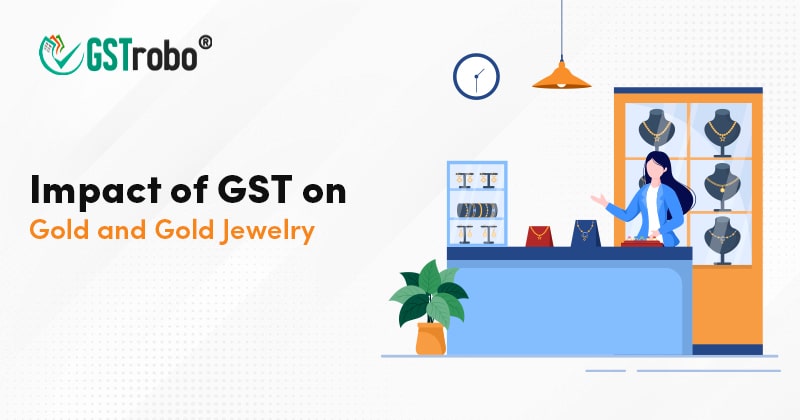Impact of GST on Gold and Gold Jewelry
On July 1, 2017, the Goods and Services Tax (GST) came into effect, influencing the pricing of various items. It influenced a wide range of industries, including hotels, textiles, FMCG, E-commerce, agriculture, automobiles, and many more.

When it comes to gold, different GST rates were applied at various phases, such as manufacturing, supply, and so on. To date, gold has maintained its prominent status as the go-to investment option in India. This is why it is critical to understand the eventual impact of GST on gold and jewelry prices.
What is GST on Gold?
When a person acquires gold jewelry, they must pay a fixed amount of 3 percent GST. In addition, he must pay GST at a rate of 5% on the manufacturing charges. It is vital to remember that the GST rates for gold import, purchase, and manufacturing are all different.
Note: Many gold merchants, sellers, or jewelers take the services of goldsmiths and specialists who carry out job work on the gold bars or gold biscuits supplied to make jewelry. It is considered a supply of service. The goldsmiths will charge for their service known as making charges which will attract GST of 5%. If these goldsmiths or specialists are not registered under GST, the gold merchant or jeweler must pay GST at 5% on a reverse charge basis.
However, if you sell old gold jewelry and buy new jewelry in the same transaction, you will not be charged GST. This implies that individuals may save on GST by simply exchanging old gold goods for new Gold.
GST Rate on Gold Purchase
According to the tax slabs released on June 3rd, 2017, Gold is taxed at a rate of 3%. In other words, all gold and gold-related jewelry would be taxed at a fixed rate of 3%, with the obligation falling on the end-user.
GST Rate on Gold Making
Section 8 of the CGST Act states that selling gold ornaments or jewelry to the common man is a composite supply of goods and services. The gold used is considered goods and making charges or value addition is towards job work. Since the principal supply is the sale of gold, the GST rate of 3% shall be levied instead of 5% on the total value of the jeweler, whether or not making charges is shown separately. The CBIC has clarified this in its sectoral FAQs.
Example of Price change after the implementation of GST on Gold Making Charges
| Price of Gold | Pre-GST | Post-GST |
| 1,00,000 | 0% | 3% |
| Total Price of Gold | INR 1,00,000 (No Change) | INR 1,03,000 |
| Impact of GST | No Change | Increase in the Price of Gold Product |
Impact of GST on Organize and Unorganized Gold Market
Given that just 30% of the gold market in India is organized, GST was welcomed as a key participant in the organized market. It was seen as a reliable method of increasing transparency in the gold trade. The unorganized gold sector was yearning for substantial reforms, and the advent of GST gave a much better legal framework for how gold was purchased.
It should be emphasized that, despite what appears to be a considerable increase in gold prices, GST provides for Input Tax Credit (ITC). This enabled gold market participants to get credit against the taxes paid on their outbound deliveries, reducing their responsibility and encouraging many unorganized players to migrate to the organized market.
Note: The jeweler or gold merchant can claim Input Tax Credit paid on the raw materials used, i.e., gold and other job work charges incurred. Even when the gold merchant pays tax on a reverse charge basis for supply from an unregistered job worker, he can claim the ITC on such tax.
The implementation of the Goods and Services Tax (GST) opened up more opportunities for small gold players to ascend the organized value chain.
Things to Note about GST Impact on Gold
As the price of gold fluctuates regularly owing to several variables such as import duty, demand, supply, currency fluctuations, and so on, the final transaction amount also influences GST on gold.
Since precious and semi-precious stones are subject to distinct GST rules, the purchase bill should include them individually.
The price of gold varies according to its purity. As a result, the GST amount varies depending on the gold grade. Even though 24-carat gold is the highest grade obtainable, most jewelers make gold jewelry with 22 karats, 18 karats, and 14 karat gold.
The Bottom Line
Gold is one such commodity that is taxed differently throughout its full product lifetime. It is in the buyer’s best interests to be fully educated to make an informed selection.
